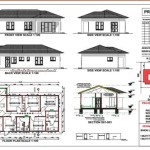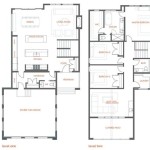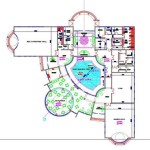Home Budget Planner
A home budget planner is a crucial tool for achieving financial stability and reaching long-term financial goals. It provides a structured approach to managing income and expenses, allowing individuals and families to track their spending, identify areas for potential savings, and allocate resources effectively. Utilizing a budget planner can significantly reduce financial stress and promote a sense of control over one's finances.
Several different types of budget planners cater to various needs and preferences. These include traditional pen-and-paper methods, spreadsheet software like Microsoft Excel or Google Sheets, dedicated budgeting apps, and online budgeting platforms. The choice of budgeting method depends largely on individual comfort levels with technology, the complexity of financial situations, and personal preferences.
Key components of an effective home budget planner include income tracking, expense categorization, and goal setting. Income tracking involves recording all sources of income, including salaries, wages, investments, and any other forms of revenue. Accurate income tracking provides the foundation for a realistic budget.
Expense categorization involves meticulously listing and categorizing all expenses. Common categories include housing, transportation, food, utilities, healthcare, entertainment, and debt payments. Detailed expense tracking reveals spending patterns and highlights areas where adjustments can be made.
Goal setting is an essential aspect of budgeting. Clearly defined financial goals, whether short-term or long-term, provide motivation and direction for financial planning. Goals might include paying off debt, saving for a down payment on a house, or building a retirement fund. A budget planner helps align spending with these goals.
Creating a home budget involves several key steps. First, gather all relevant financial documents, including pay stubs, bank statements, and bills. This information provides a clear picture of current income and expenses. Next, calculate total monthly income and list all monthly expenses. Categorize expenses for better analysis. Then, subtract total expenses from total income to determine the net income or deficit. Finally, set realistic financial goals and adjust the budget accordingly to achieve them.
Several budgeting methods can be incorporated into a home budget planner. The 50/30/20 budget allocates 50% of income to needs, 30% to wants, and 20% to savings and debt repayment. Zero-based budgeting involves allocating every dollar of income to a specific category, ensuring that income minus expenses equals zero. Envelope budgeting involves allocating cash to different spending categories in envelopes, providing a tangible way to control spending.
Numerous benefits arise from using a home budget planner. Improved financial awareness allows for a better understanding of spending habits and identification of areas for improvement. Increased savings can be achieved by identifying unnecessary expenses and redirecting funds towards savings goals. Reduced financial stress results from having a clear financial plan and knowing where money is going. Enhanced financial control empowers individuals to make informed financial decisions and achieve their financial objectives.
Common budgeting mistakes to avoid include unrealistic budgeting, neglecting to track expenses regularly, failing to adjust the budget as needed, and setting unrealistic financial goals. Consistency and flexibility are key to successful budgeting. Regularly reviewing and adjusting the budget based on changing circumstances is crucial.
Tips for effective budgeting include automating savings contributions, setting realistic spending limits, prioritizing needs over wants, tracking expenses diligently, reviewing the budget regularly, and seeking professional financial advice when necessary. Utilizing budgeting tools and resources can simplify the budgeting process and improve financial management.
Integrating technology into budgeting can significantly streamline the process. Budgeting apps and software offer features like automatic expense tracking, personalized financial reports, and goal-setting tools. These technologies can simplify budgeting and make it more accessible.
Addressing unexpected expenses requires flexibility and planning. Building an emergency fund can cushion the impact of unforeseen events. Allocating a portion of the budget to an emergency fund helps prepare for unexpected costs without derailing the overall financial plan.
Long-term financial planning should be integrated into the home budget. Considering factors like retirement planning, investment strategies, and estate planning ensures long-term financial security and helps achieve major life goals.
Maintaining financial records is crucial for accurate budgeting and tax purposes. Keeping organized records of income, expenses, and other financial documents simplifies tax preparation and provides a valuable historical record of financial activity.
Seeking professional financial advice can provide valuable guidance and support in developing a personalized budget and achieving financial goals. Financial advisors can offer expert insights and recommendations tailored to individual circumstances.

Household Budget Worksheet For Excel

Family Budget Planner Free Spreadsheet For Excel

Household Budget Planner Spreadsheet For Excel

Home Budget Worksheet Template

Monthly Household Budget Template Free Excel Csv

Printable Budget Planner Monthly Budgeting Templates Undated Digital Prints Diy Print At Home 8 5x11

Home Expenses Worksheet Image Search Results Budgeting Budget Planner

Home Budget Planner Worksheet Fillable Personal Finance Organizing Printables Household Binder Instant

Monthly Budget Planner Templates

Free Budget Sheet Template Printable And Editable








